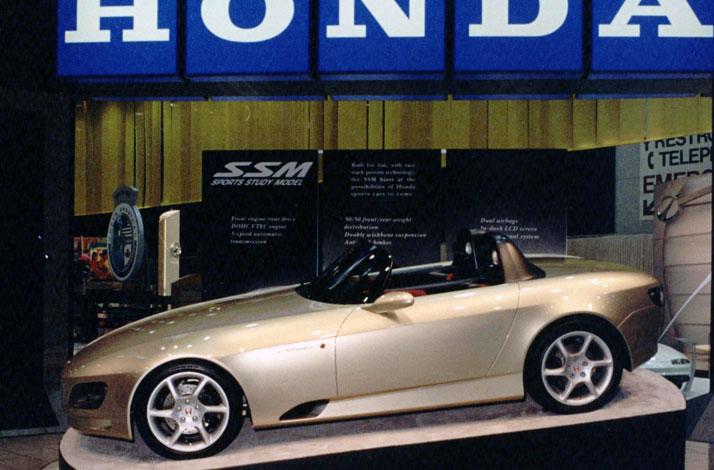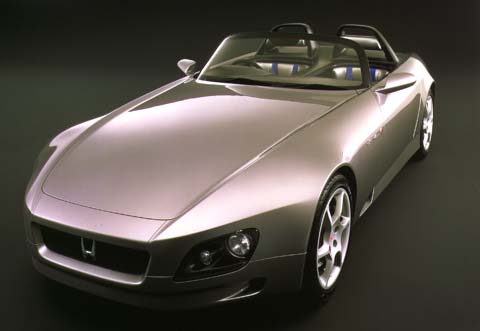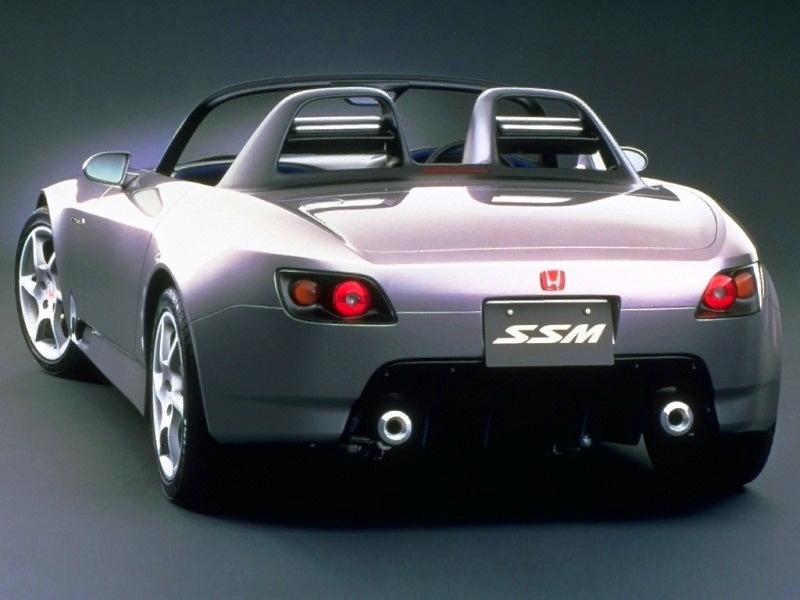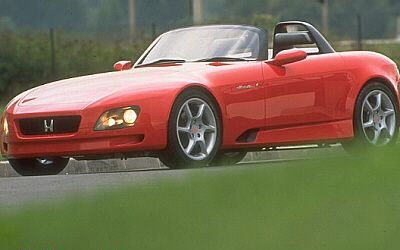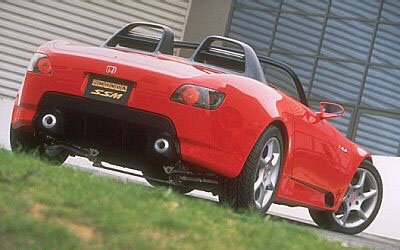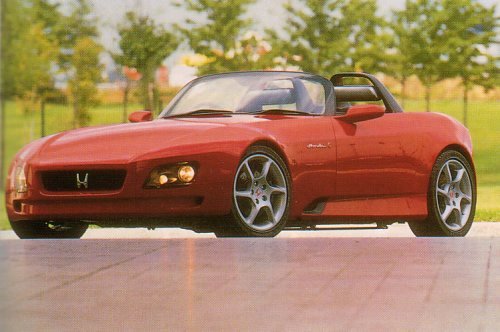Acclaimed as the star of the 1995 Tokyo Motor Show, the SSM, which stands for Sport Study Model, may enter production in an attempt by Honda to sharpen its sporting image, particularly on the important European market.
Unlike the company’s acclaimed mid-engined NSX, the SSM featured more traditional mechanicals and, as such, was a traditional front-engine/rear-drive concept. Honda’s first sport car was the feisty S800 coupe of 1966-70 vintage and the SSM reverted to its engine and drive configuration, although it was an open two-seater.
Innovation and Tradition
Created in-house at the Wako Design Centre near Tokyo, Honda maintained that it showed ‘the company at its innovative best applying state of art solutions to a traditional sport car concept.’ With well proportioned, uncluttered lines, the SSM, featured a steel monocoque shell with wraparound twin cockpits. Each was lined with composite panels and had its own rollover hoop. They were divided by a robust reinforcing bar which made a significant contribution to the stiffness of the body structure.
The driver enjoyed a state-of-the-art instrument package with a liquid-crystal display pack, air conditioning and computerized navigation systems. A distinctive red button on the right of the cockpit was used to start of the engine. This was a 2 litre, five-cylinder, twin-overhead camshaft, VTEC 20-valve unit. The NSX-derived F-Matic transmission had five speeds and finger-tip control. Suspension also came courtesy of the prestigious sports car and employed machined aluminium wishbones all round.
Enthusiastic Reception
This concept car, with a claimed top speed of 249 km/h (155 mph), received an enthusiastic reception from commentators at Tokyo. Honda says that it may go into production sometime in 1998. The NSX is currently manufactured at a purpose-built factory at Tochigi designed to produce 50 car a day and 12000 cars per annum. It is currently operating at only some 1200 a year. The projected SSM could be a candidate for the plant. The car would probably be built using aluminium bodywork , although the rather cramped cockpit would also require more radical revision.
While Honda will persevere with its NSX flagship, it will be restyled and V12-powered. The SSM, by contrast, would only be built if it could make a profit. Honda estimates that this would have to be at the annual rate of some 20000 units. 1998 is the favoured date as Honda’s 50th anniversary falls in that year, which may also see its return to Formula 1.
Wood, Jonathan (1997) Concept Cars, Paragon, ISBN 0-75252-084-9.

